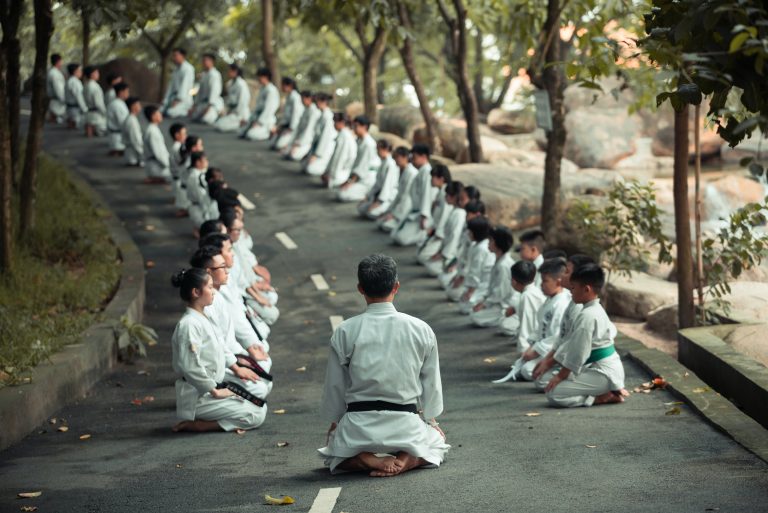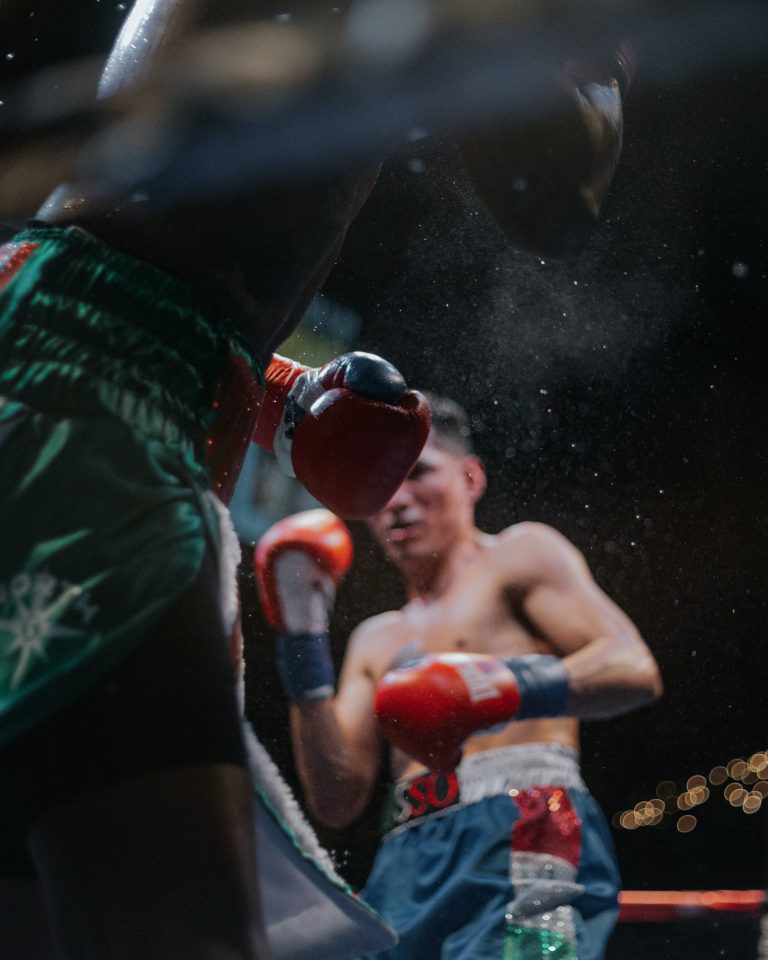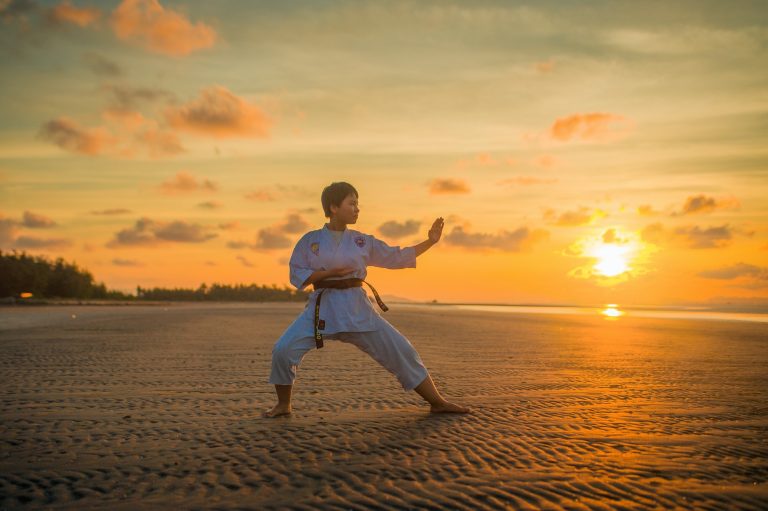How Does Karate Chop Work?
Karate chop, also called knife-hand strike, is a common technique used in martial arts, particularly karate. It is performed by striking the target with the side of the hand in a quick and powerful manner. This technique is often used to strike sensitive areas such as the neck, throat, and temple of an opponent. But how does this technique work? In this article, we’ll dive deeper into the science behind the karate chop and how it can be used effectively in martial arts.
The Anatomy of a Karate Chop
To understand how the karate chop works, we need to understand the anatomy of the hand. The human hand consists of 27 bones, including 8 wrist bones, 5 metacarpal bones, and 14 phalanges. The palm of the hand contains a thick layer of muscles and connective tissue that helps to absorb the impact and distribute it evenly across the hand.
When performing a karate chop, the hand is held straight with the fingers and thumb extended and held tightly together. The striking surface is the side of the hand, which is made up of the ulnar bone and the surrounding muscles and connective tissue.
The Physics of the Karate Chop
The karate chop relies on the principles of physics to generate power and speed. When the hand strikes the target, the kinetic energy generated by the movement of the arm is transferred to the target, causing it to move or break. The amount of force generated by the karate chop depends on several factors, including the speed of the strike, the mass of the hand, and the angle of the strike.
The speed of the strike is perhaps the most important factor in generating power. The faster the hand moves, the more kinetic energy is generated, and the more force is transferred to the target. This is why karate practitioners often train to improve their speed and reaction time.
The mass of the hand also plays a role in the power of the karate chop. A heavier hand will generate more force upon impact than a lighter hand. However, a heavier hand can also be more difficult to control, so practitioners must strike a balance between mass and control.
Finally, the angle of the strike is also an important factor in generating power. A karate chop that strikes at a perpendicular angle to the target will generate more force than one that strikes at an oblique angle. This is why karate practitioners often aim for sensitive areas such as the neck and throat, where a perpendicular strike will have the most impact.
How to Perform a Karate Chop
To perform a karate chop, begin by assuming a fighting stance with your feet shoulder-width apart, one foot slightly behind the other. Hold your hands up in front of you with your elbows bent and your fists clenched.
To perform a karate chop, start by extending your arm in front of you with your palm facing down. Then, quickly rotate your wrist so that your palm is facing up and your fingers and thumb are tightly together. Finally, strike the target with the side of your hand in a quick and powerful motion.
Remember to aim for sensitive areas such as the neck and temple, and to follow through with the strike to maximize the force and impact.
The Benefits of Karate Chop
The karate chop is a powerful and effective technique that can be used in a variety of situations, from self-defense to martial arts competitions. It is a quick and efficient way to incapacitate an opponent, and it requires little in the way of preparation or training.
In addition to its practical applications, the karate chop is also a great way to improve your coordination, balance, and reaction time. By practicing this technique regularly, you can improve your overall martial arts skills and gain more confidence in your ability to defend yourself.
What is Karate Chop?
Karate Chop is a hand technique used in martial arts, specifically in karate, to deliver a powerful strike using the edge of the hand. The technique utilizes the ulna bone of the forearm and aims at vulnerable pressure points on the opponent’s body to cause pain, injury or knockout.
How Does Karate Chop Work?
Karate Chop works based on the principle of delivering a focused, powerful force to a specific point on the opponent’s body. The technique employs the edge of the hand, the area between the lower portion of the thumb and the base of the pinky finger, to deliver a sharp, chopping motion in a downward or upward direction.
Body Mechanics of Karate Chop
Karate Chop involves the coordination of the entire body, not just the hand, to produce maximum power and effectiveness. A Karate Chop uses the entire body weight to create momentum, and the upper torso rotates toward the target before snapping back with the force of the strike. This motion gives the Karate Chop its power and speed, making it an effective self-defense technique.
Pressure Points in Karate Chop
Karate Chop aims to strike specific pressure points on the opponent’s body, which can cause intense pain, temporary paralysis or injury. These pressure points are found in areas such as the neck, head, and face, and can be targeted with both downward and upward Karate Chops.
What are the Different Types of Karate Chop?
The technique of Karate Chop can vary depending on the angle, direction, and force of the strike. Here are some of the most common types of Karate Chop:
Vertical Karate Chop
The Vertical Karate Chop is the most common type of Karate Chop, which involves striking downward from the top of the head to the collarbone, nose or neck, with the edge of the hand.
Upward Karate Chop
The Upward Karate Chop involves striking upwards from the lower part of the body, with the edge of the hand, aiming for the chin, jaw, or the nose.
Diagonal Karate Chop
The Diagonal Karate Chop involves striking at a 45-degree angle from the shoulder to the opposite side of the body, with the edge of the hand, targeting the temple, ribs or neck.
What are the Benefits of Karate Chop?
Karate Chop can be a useful technique for self-defense, as it allows individuals to strike vulnerable pressure points and cause pain and injury to an attacker. Practicing Karate Chop can also help individuals improve their overall strength, speed, and coordination, making it a great addition to a karate training program.
What are the Risks Associated with Karate Chop?
Like any other martial arts technique, Karate Chop should only be practiced under proper supervision to avoid the risk of injury. Improper execution of the technique can result in a sprained or fractured wrist, or even broken fingers. Therefore, it’s essential to practice the technique correctly, and with proper form and technique to minimize the risk of injury.
How Does Karate Chop Work?
Have you ever wondered how the karate chop works? This seemingly simple move is a staple in many martial arts practices, but it requires a lot of precision and technique to be effective. In this guide, we will break down the mechanics of the karate chop and provide step-by-step instructions on how to execute it properly.
What is a Karate Chop?
A karate chop, also known as a knifehand strike, is a technique used in many martial arts, including karate, taekwondo, and hapkido. It involves using the side of your hand to strike an opponent’s body. When executed properly, a karate chop can be a powerful and effective attack.
The Mechanics of a Karate Chop
To perform a karate chop, start with your arm at your side, elbow bent at a 90-degree angle. Make a straight line with your wrist and forearm, tucking your thumb into your palm. Your pinky finger should be the last part of your hand to touch your target.
As you strike with your hand, rotate your forearm so that the pinky finger side of your hand strikes the target. This will increase the power behind the strike and help prevent injury to your hand.
Step-by-Step Instructions for the Karate Chop
Now that we have covered the mechanics of the karate chop, let’s go through step-by-step instructions for performing the technique properly.
1. Start by standing with your feet shoulder-width apart, knees slightly bent.
2. Raise your dominant hand to your shoulder, making sure your elbow is at a 90-degree angle.
3. Make a straight line with your wrist and forearm, tucking your thumb into your palm.
4. Focus on a target, such as a board or pad, and strike with the pinky side of your hand.
5. Follow through with the strike and pull your hand back to your side.
Common Mistakes to Avoid
While the karate chop may seem like a simple technique, there are several common mistakes that can decrease the power and effectiveness of the strike. Here are a few things to keep in mind:
– Do not strike with the flat part of your hand. This can cause pain and injury to your hand.
– Do not bend your wrist while striking. This can cause pain and decrease the power of the strike.
– Make sure to follow through with the strike. Pulling your hand back too quickly can decrease the power of the strike.
The Benefits of Practicing Karate Chops
In addition to being a powerful self-defense technique, practicing karate chops can have several other benefits. Here are a few of them:
– Improved hand-eye coordination
– Increased accuracy and precision
– Enhanced self-discipline and focus
– Improved overall fitness and health
Conclusion
The karate chop may seem like a simple technique, but it requires precision, technique, and practice to be effective. By following the step-by-step instructions provided in this guide and avoiding common mistakes, you can execute a powerful karate chop and enjoy the benefits of practicing this martial arts technique.
Inhaltsverzeichnis






